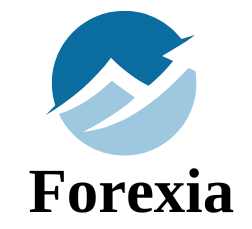- Gold price falls sharply as Fed Waller maintains a higher for longer interest-rates narrative.
- The last leg of high US inflation has turned out to be significantly stubborn.
- Guidance from three Fed policymakers and US Industrial Production data are due on Wednesday.
Gold price (XAU/USD) is expected to face more pressure as the United States Census Bureau has reported a strong Retail Sales data for December. Sales ticket at retail stores were significantly higher by 0.6% against expectations of 0.4% and the former reading of 0.3%. This is expected to ease further the chances of interest rate cut by the Fed.
The precious metal extended its correction as a hawkish commentary from Federal Reserve (Fed) Governor Christopher Waller has casted doubts about a rate cut by the central bank in the March meeting. Fed policymakers have been favouring interest rates to remain higher for longer, defying market expectations, amid a lack of confidence in inflation returning towards the 2% target in a timely and sustainable manner.
The Consumer Price Index (CPI) data for December indicated that the last leg of high price pressures is quite challenging for Fed policymakers, likely due to steady labor market conditions and decent consumer spending momentum. A quick rate cut decision by the Fed can lead to persistence in inflationary pressures and dampen the work done to achieve price stability.
Going forward, the performance of the US Dollar, Treasury yields and bullions will be guided by the Industrial Production data for December and the interest rate outlook from Fed speakers.
Daily digest market movers: Gold price retreats on upbeat US consuemr spending momentum
- Gold price has extended its losses to near $2,017 and is expected to decline further towards the psychological support of $2,000.
- The downside bias to the Gold price has strengthened as investors are uncertain about when the Federal Reserve could start discussing the timeframe for interest rate cuts.
- A hawkish commentary from Fed Governor Christopher Waller has raised doubts about whether the central bank will cut interest rates in March.
- Christopher Waller commented that the Fed should not rush to take interest rates down until it is ensured that inflation will return to the 2% target in a sustainable manner.
- Waller added that the Fed should proceed with rate cuts “methodically and carefully” to bail out the economy from an expected slowdown. He further added that resilience in the US economy could delay potential reductions in borrowing costs.
- Fed policymakers have become more determined to maintain a restrictive interest rate stance as the December inflation data turned out surprisingly stubborn.
- After Waller’s commentary, Investment banking firm Goldman Sachs said the Fed could cut rates somewhat later or might announce one cut each quarter from April.
- Meanwhile, bets supporting a rate cut by the Fed in March have dropped further. As per the CME Fedwatch tool, trades see a 58% chance for a 25-basis points (bps) interest rate cut in March, down from 70% at the start of the week.
- The increase in the US Dollar Index (DXY) also weighed on Gold price. The USD Index has slightly corrected after posting a fresh monthly high above 103.50.
- Further action in the US Dollar will be guided by the Industrial Production data for December.
- Investors have projected that the Industrial Production remained stagnant after rising 0.2% in November.
- Apart from the US economic data, Fed’s Beige Book and fresh outlook on interest rates from Fed speakers will be keenly watched. On Wednesday, Fed’s Michael Barr, Michelle Bowman, and John Williams are due to speak.
- Fed policymakers are expected to endorse a restrictive monetary policy stance for a longer period than what is anticipated by market participants.
Technical Analysis: Gold price finds interim support near 50-day EMA
Gold price continues its downside below $2,020 after Fed Waller’s hawkish remarks about interest rates. The near-term demand for Gold is not bullish anymore as price has dropped below the 20-day Exponential Moving Average (EMA), which trades around $2,036. The yellow metal has found interim support after sliding to near the 50-day EMA, which oscillates near $2,017. The 14-period Relative Strength Index (RSI) is declining towards 40.00, which could offer some cushion. However, a breakdown below the same will lead to the activation of bearish momentum.
INTEREST RATES FAQS
What are interest rates?
Interest rates are charged by financial institutions on loans to borrowers and are paid as interest to savers and depositors. They are influenced by base lending rates, which are set by central banks in response to changes in the economy. Central banks normally have a mandate to ensure price stability, which in most cases means targeting a core inflation rate of around 2%.
If inflation falls below target the central bank may cut base lending rates, with a view to stimulating lending and boosting the economy. If inflation rises substantially above 2% it normally results in the central bank raising base lending rates in an attempt to lower inflation.
How do interest rates impact currencies?
Higher interest rates generally help strengthen a country’s currency as they make it a more attractive place for global investors to park their money.
How do interest rates influence the price of Gold?
Higher interest rates overall weigh on the price of Gold because they increase the opportunity cost of holding Gold instead of investing in an interest-bearing asset or placing cash in the bank.
If interest rates are high that usually pushes up the price of the US Dollar (USD), and since Gold is priced in Dollars, this has the effect of lowering the price of Gold.
What is the Fed Funds rate?
The Fed funds rate is the overnight rate at which US banks lend to each other. It is the oft-quoted headline rate set by the Federal Reserve at its FOMC meetings. It is set as a range, for example 4.75%-5.00%, though the upper limit (in that case 5.00%) is the quoted figure.
Market expectations for future Fed funds rate are tracked by the CME FedWatch tool, which shapes how many financial markets behave in anticipation of future Federal Reserve monetary policy decisions.







